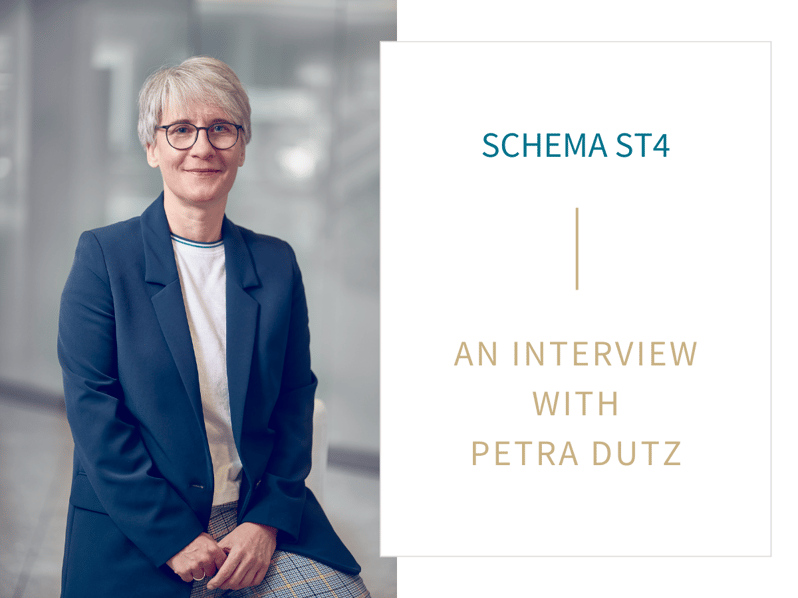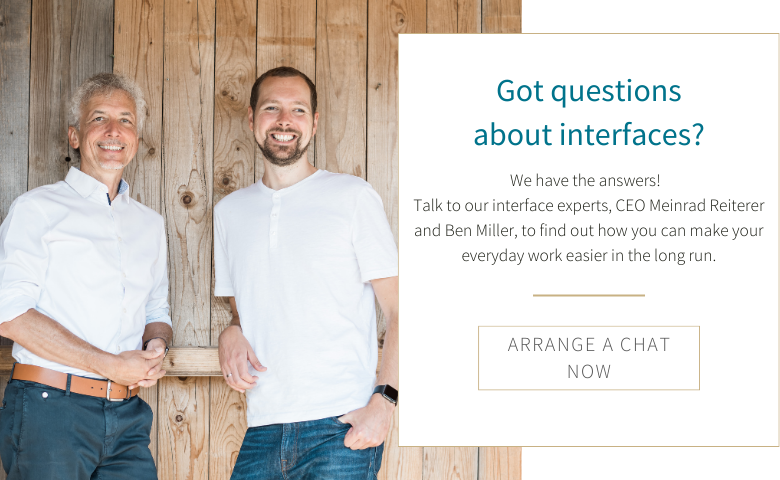
Petra Dutz, responsible for new customer sales at Quanos, talks about the SCHEMA ST4 content management system and how it can help the translation process – from checking terminology to enabling automation. As a certified Quanos partner, MEINRAD are the experts in translating content produced in ST4 and can create interfaces to accelerate workflows.
Please tell us a little bit about yourself: what led you to Quanos, what does your job involve, and how long have you been doing it?
My name is Petra Dutz, and I studied Applied Linguistics and Translation Studies in Germersheim (Johannes Gutenberg University of Mainz). I’ve also taught courses on CAT tools there on a part-time basis for almost two decades. Since getting my degree, I’ve spent 20 years working in various roles in the field of translation and localization technologies, and I’ve had plenty of experience with technical documentation throughout that time. Two and a half years ago I decided to focus all my efforts on that, and I joined the Quanos new customer sales team. I did it because I thought it was time for something new, and the job description really appealed to me. My job involves advising customers around the world on how they can introduce smart solutions for successful information management. I think technical editing is a very complex subject: it often goes under the radar, but it affects lots of different areas at a business.
Let’s talk about SCHEMA ST4 – what can it do, who is it for, what are its USPs, and how long has it been around?
SCHEMA ST4 is the content management system developed by Quanos, and it’s been around since the 90s. I don’t like just listing its USPs and saying that we can do this or that better than our competitors – what matters is that it meets customer needs as a CMS, so what it has to offer varies from one business to another. But one key feature of SCHEMA ST4 is a wide range of tools for translation management. Most of our customers need their content produced in multiple languages, whether that’s six to eight languages or as many as 30 or 40. In my experience, technical editors are often responsible for translation management as well, and they usually want to make it as simple and efficient as possible. SCHEMA ST4 is perfect for that. More and more technical editors are asking for automation now. Many of them have realized that it can make their work a lot easier: in simple terms, all they have to do is press a few buttons to export the translation files and send them to the translation agency, then press a few buttons when the translation is sent back, and hey presto, their manual has been translated. And SCHEMA ST4 can make that happen.
Are there other relevant features for your customers?
One other feature worth mentioning is layout design. This is a big part of technical editing, as the translation itself isn’t the whole story and the work required for layout design multiplies after a document has been translated. Many people will know the frustration of inserting something somewhere, only for that to instantly mess up the entire layout. That’s where SCHEMA ST4 comes in: it allows you to create fully automated layouts without any programming or additional software. SCHEMA ST4 offers an all-round package that puts you in control. And if there are any stages in the process you’d rather not (or can’t) do yourself, you can ask a network of partners to help.
Our customers also appreciate the options it gives them: they can produce content in the Microsoft Word interface, in an XML editor called XMetaL, or in the new, purely web-based ST4 Web Author.
What features does SCHEMA ST4 have to help technical editors in the writing process?
The terminology check and the suggestions for similar sentences are very useful for editors. You can think of the latter as a kind of source-language translation memory: suggesting similar sentences during the writing process means authors can reuse sentences if they want to. Of course this improves consistency in source-language documentation, but it also reduces what companies subsequently pay for translations.
Speaking of paying for translations: how does a content management system like SCHEMA ST4 affect/benefit the translation process?
A CMS helps improve the quality of the source text. The writing tools for authors I mentioned, plus the fact that terminology is displayed and checked, make it easier to produce consistent texts and avoid variations. Once they’ve written a sentence, it’s then translated once and is then stored in the CMS.
What are the benefits of working with a Quanos-certified translation agency for clients who need translations?
The clear benefit is that as a client, you can be confident that the agency knows all about the technical possibilities and any “challenges” / particular issues. So they’re the ideal partner for establishing the right workflow, and you don’t have to worry about facing any insurmountable problems.
What can SCHEMA ST4 do in terms of terminology management?
SCHEMA ST4 has a terminology feature which allows you to create terms by entering definitions, fields, names and grammatical information, as well as a status – i.e. if the term is forbidden, preferred or an alternative. You can also save an image to illustrate a term.
And how can you share the terminology with the translation agency?
You can export your terminology, and import it again, using the TBX exchange format. By default this happens manually, but you can also set up an automated terminology process and create suitable workflows for it. Though that’s only worthwhile if you frequently have large projects with lots of terminology.
Overall, how does SCHEMA ST4 support integration with other systems?
SCHEMA ST4 enables integration both with other company departments and with external partners. The technical editors don’t work in isolation – they’re the place where lots of areas of the company come together. So the software can be integrated with PIM systems, SAP systems and others, and the specifics of how it works can be customized to suit each situation.
CAT tools used by translation agencies can also connect to SCHEMA ST4, for example using the various forms of the COTI standard.
There are thee levels of COTI – how do they differ, and which is used most often?
Level 1 is manually exchanging a ZIP folder. Level 2 involves setting up something called a “Hot Folder”, which SCHEMA ST4 and the CAT tool can access. The translation agency’s system monitors the folder at set intervals, and if it has new content, the system grabs it for translation. Once the translation is ready, the files are returned to the client’s content management system the same way. Level 3 is a direct web-based interface which provides additional metadata, such as who is currently working on a project. All levels can be useful, but currently Level 2 is used most often. I think that’s because it offers the best value for money, and in particular it’s because pretty much all CAT tools support COTI Level 2.
Let’s finish by talking about artificial intelligence. AI is everywhere – where does it fit in with SCHEMA ST4?
Integrating AI is something that lots of people are interested in. In the context of translation, one thing you can do is send texts from SCHEMA ST4 to DeepL – though we wouldn’t necessarily recommend that. Translations could then potentially end up with the status “translated” in the system without being checked, typically in one or more languages which the client might not speak. I think translations should be handled by experts – not least from a liability perspective. Machine translation definitely can be used, but it should be used by professionals who can evaluate the MT output and improve/correct it where needed before the translations are fed into the content management system.
On the subject of AI in general, last year Quanos acquired “plusmeta”, a leading provider of AI technology. My view is that there will be significant progress in the foreseeable future, and a number of aspects of technical editing will be either taken over or supported by AI. One example is assigning metadata, a process where AI is already helping us.
Thank you for talking to us!
Main image: © Quanos


